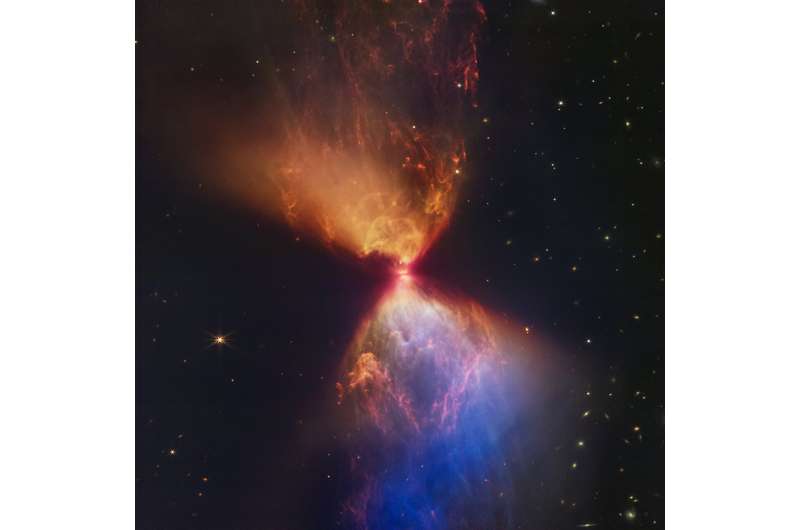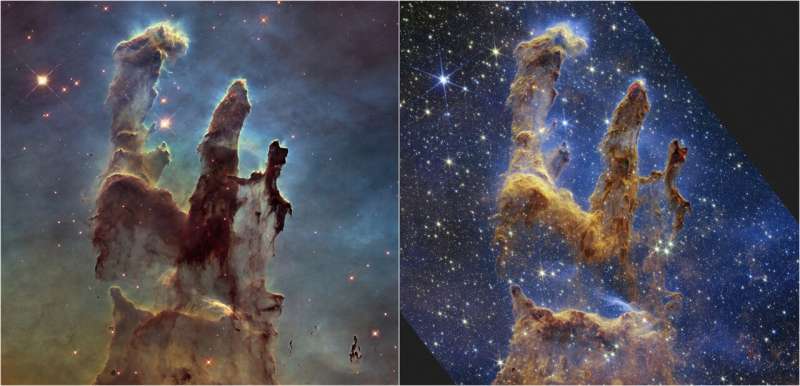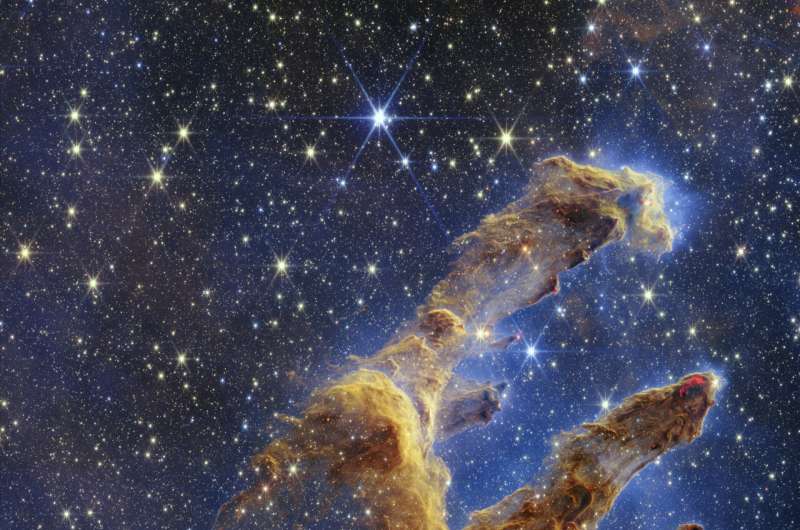NASA’s Webb Space Telescope is finding bright, early galaxies that until now were hidden from view, including one that may have formed a mere 350 million years after the cosmic-creating Big Bang.
Astronomers said Thursday that if the results are verified, this newly discovered throng of stars would beat the most distant galaxy identified by the Hubble Space Telescope, a record-holder that formed 400 million years after the universe began.
Launched last December as a successor to Hubble, the Webb telescope is indicating stars may have formed sooner than previously thought—perhaps within a couple million years of creation.
Webb’s latest discoveries were detailed in the Astrophysical Journal Letters by an international team led by Rohan Naidu of the Harvard-Smithsonian Center for Astrophysics. The article elaborates on two exceptionally bright galaxies, the first thought to have formed 350 million years after the Big Bang and the other 450 million years after.
Naidu said more observations are needed in the infrared by Webb before claiming a new distance record-holder.
Although some researchers report having uncovered galaxies even closer to the creation of the universe 13.8 billion years ago, those candidates have yet to be verified, scientists stressed at a NASA news conference. Some of those could be later galaxies mimicking earlier ones, they noted.

“This is a very dynamic time,” said Garth Illingworth of the University of California, Santa Cruz, a co-author of the article published Thursday. “There have been lots of preliminary announcements of even earlier galaxies, and we’re still trying to sort out as a community which ones of those are likely to be real.”
Tommaso Treu of the University of California, Los Angeles, a chief scientist for Webb’s early release science program, said the evidence presented so far “is as solid as it gets” for the galaxy believed to have formed 350 million after the Big Bang.

If the findings are verified and more early galaxies are out there, Raidu and his team wrote that Webb “will prove highly successful in pushing the cosmic frontier all the way to the brink of the Big Bang.”
“When and how the first galaxies formed remains one of the most intriguing questions,” they said in their paper.

NASA’s Jane Rigby, a project scientist with Webb, noted that these galaxies “were hiding just under the limits of what Hubble could do.”
“They were right there waiting for us,” she told reporters. “So that’s a happy surprise that there are lots of these galaxies to study.”
The $10 billion observatory—the world’s largest and most powerful telescope ever sent into space—is in a solar orbit that’s 1 million miles (1.6 million kilometers) from Earth. Full science operations began over the summer, and NASA has since released a series of dazzling snapshots of the universe.
© 2022 The Associated Press. All rights reserved. This material may not be published, broadcast, rewritten or redistributed without permission.
Citation:
Webb Space Telescope spots early galaxies hidden from Hubble (2022, November 24)
retrieved 25 November 2022
from https://phys.org/news/2022-11-webb-space-telescope-early-galaxies.html
This document is subject to copyright. Apart from any fair dealing for the purpose of private study or research, no
part may be reproduced without the written permission. The content is provided for information purposes only.
Source link
Author







